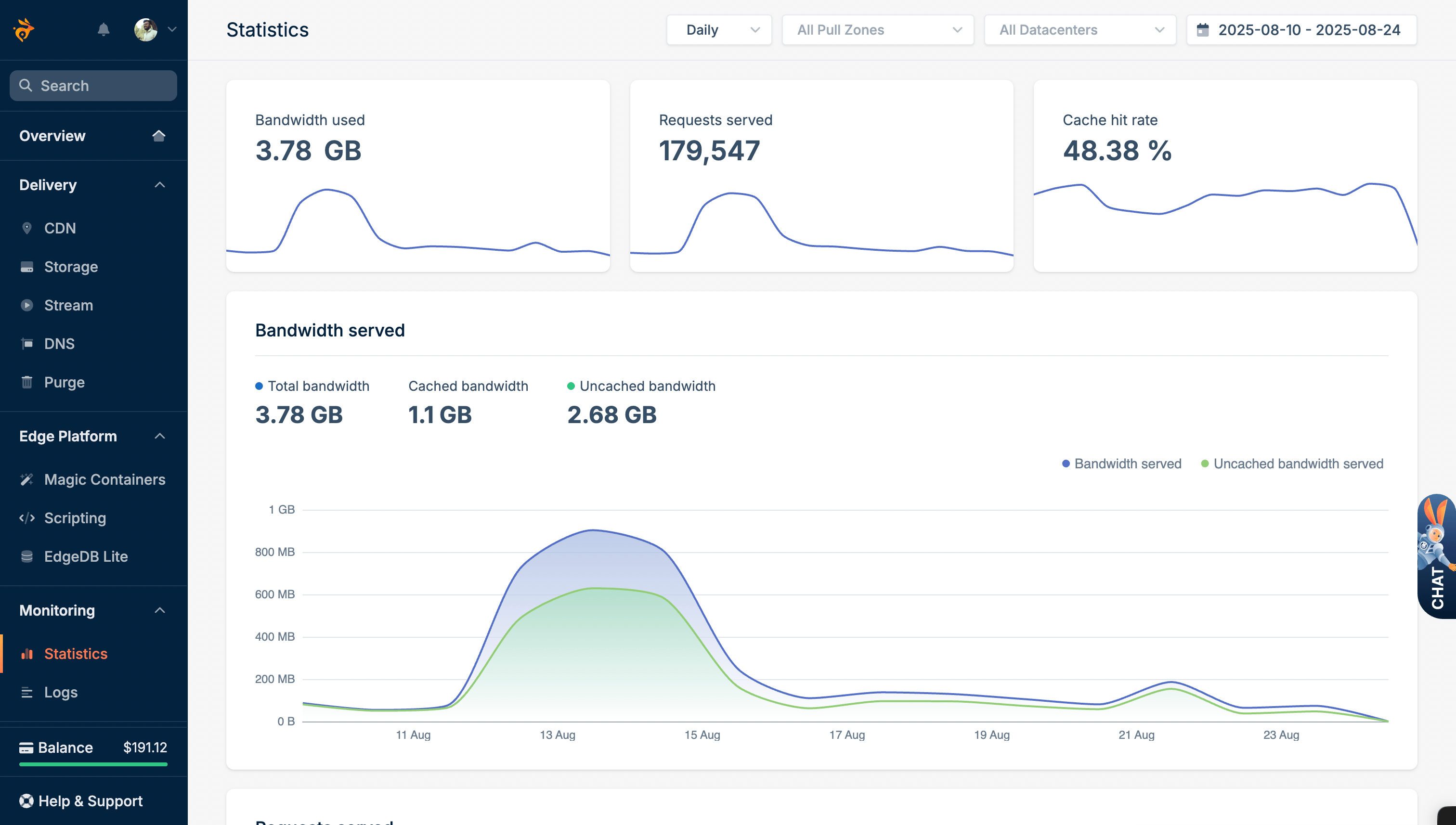Technical Guides
Progressive JPEG vs Baseline JPEG - Which Loading Method is Better?
Updated on August 30, 2025
Understanding progressive vs baseline JPEG loading can improve your website's user experience. Progressive JPEGs load in multiple passes, showing a rough image first that gradually becomes clearer. Baseline JPEGs load from top to bottom in a single pass.
Learn more about image compression types.
How They Load
Visual difference between progressive and baseline JPEG loading patterns.
File Size Impact
Actual file size differences and encoding overhead comparison.
User Experience
Which method provides better perceived performance and UX.
When to Use Each
Best practices for choosing progressive vs baseline JPEG encoding.
Want Automatic JPEG Optimization?
BunnyCDN can automatically convert your images to progressive JPEG for better user experience on slower connections while keeping baseline format for fast networks.
Try BunnyCDN with $5 Free Credit →
To claim, use "TheWPX" coupon on the billing page.
How JPEG Loading Works
Baseline JPEG Loading
Baseline JPEGs load sequentially from top to bottom. Users see the image appear line by line until the entire image is visible.
Loading process:
- Top-to-bottom scan - Image loads from first row to last row
- Single pass rendering - Each line appears once it's downloaded
- Sharp from start - Visible portions are at full quality immediately
- Predictable loading - Always loads in the same order
Progressive JPEG Loading
Progressive JPEGs load in multiple passes, each adding more detail to the entire image area.
Loading process:
- First pass - Shows a rough, blurry version of the entire image
- Second pass - Adds more detail and reduces blurriness
- Third pass - Further improves image quality
- Final pass - Displays the complete, sharp image
The user sees something immediately, even on slow connections.
File Size Comparison
Size Differences
Progressive JPEGs are typically 2-10% larger than baseline JPEGs:
- Small images (under 50KB): Usually 2-3% larger
- Medium images (50-200KB): Typically 3-5% larger
- Large images (over 200KB): Can be 5-10% larger
Real Examples
- Product photo (80KB baseline): 83KB progressive (+3.7%)
- Hero image (150KB baseline): 158KB progressive (+5.3%)
- High-resolution photo (500KB baseline): 535KB progressive (+7%)
The size increase comes from additional metadata needed to store multiple scan information.
User Experience Impact
Progressive JPEG Benefits
Better perceived performance:
- Users see something immediately, even on slow connections
- Reduces bounce rate during image loading
- Creates impression of faster loading
- Prevents blank spaces that look broken
Best for:
- Large hero images above the fold
- Slow network connections (3G, rural areas)
- Image-heavy websites
- Mobile users with limited bandwidth
Baseline JPEG Benefits
Actual performance advantages:
- Slightly smaller file sizes
- Less CPU processing required
- Faster decoding on older devices
- Simpler encoding and decoding process
Best for:
- Fast network connections (WiFi, fiber)
- Small images that load quickly anyway
- Older mobile devices with limited processing power
- When file size is critical
Which Method to Choose
Use Progressive JPEG When:
- Large images (over 100KB) where loading time matters
- Hero images that users see first
- Slow connections are common among your users
- Mobile-heavy audience with varying network speeds
- Image galleries where multiple large images load
Use Baseline JPEG When:
- Small images (under 50KB) that load quickly
- Fast networks where loading time isn't an issue
- Older devices that struggle with progressive decoding
- File size is critical and every byte matters
- Simple websites with minimal images
Modern Recommendation
Most websites benefit from progressive JPEG for images over 100KB and baseline JPEG for smaller images. Modern CDNs can automatically choose the best method based on image size and user connection.
Implementation
Automatic Conversion
Most image processing tools and CDNs support progressive JPEG:
- Photoshop: Save for Web → Progressive option
- ImageMagick:
-interlace Planeparameter - CDNs: Often convert automatically based on image size
- Build tools: Can process during build time
Testing Your Images
Check if your JPEG is progressive using browser developer tools or online tools. Progressive images will show "Progressive: Yes" in the image details.
